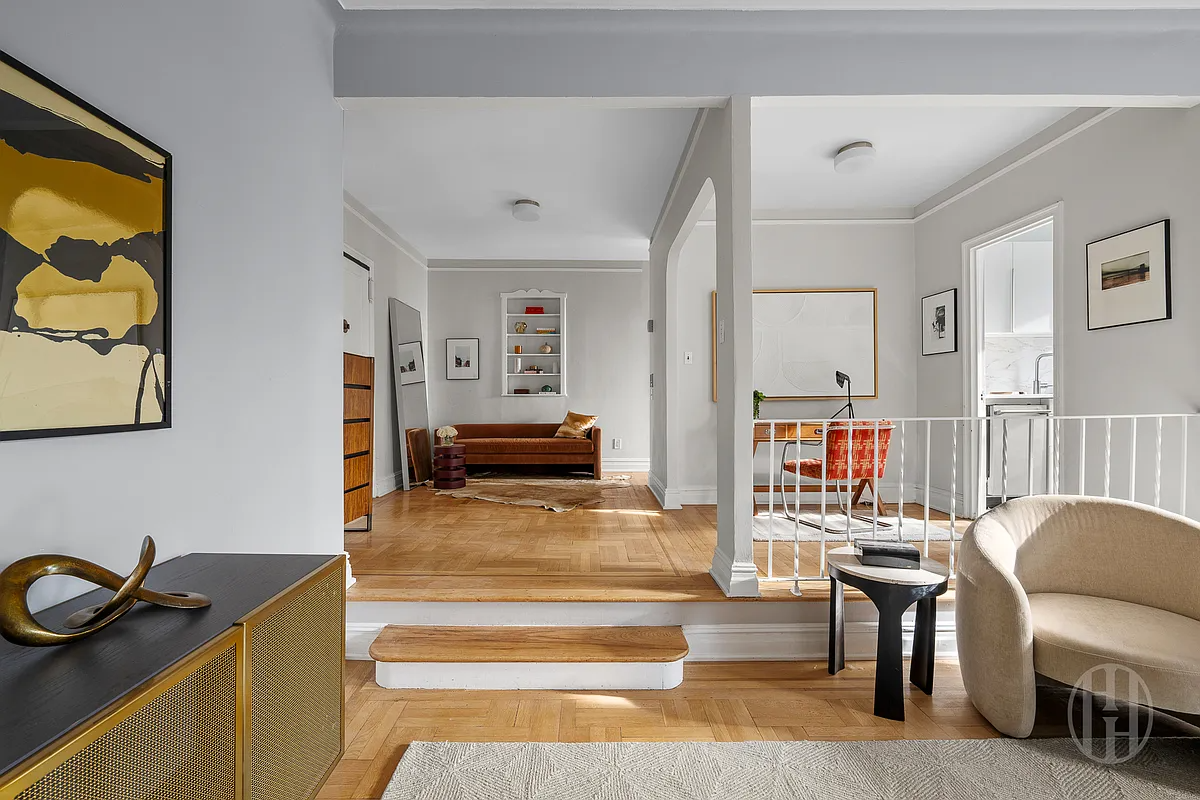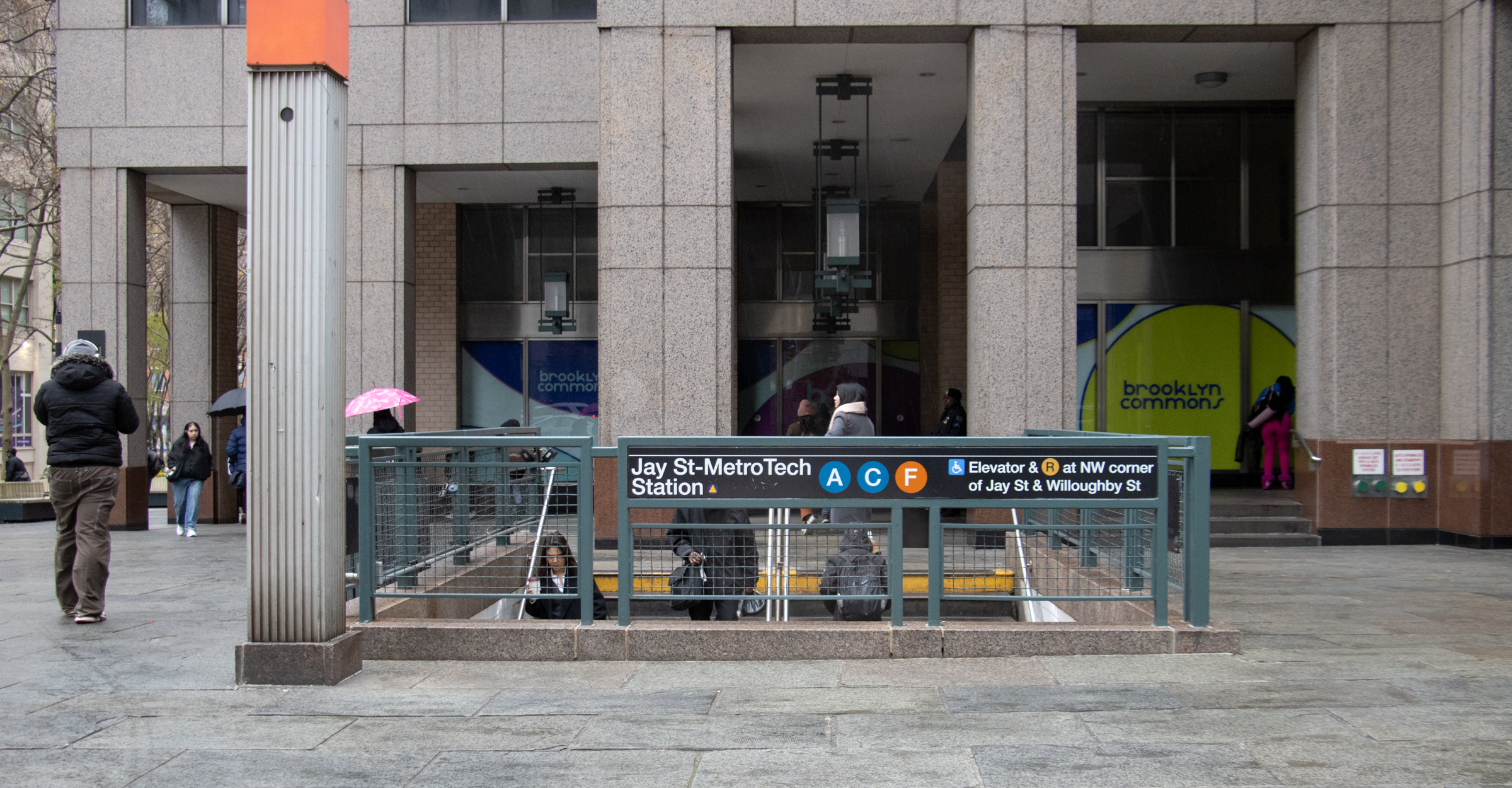Details on the Borough Hall Skyscraper District
The creation of the Borough Hall Skyscraper District had been in the works for at least five years (we reported on it being discussed at a Brooklyn Heights Association meeting back in 2005) before it was officially presented at a Landmarks hearing on October 26. But we had yet to see a proposed map of…


The creation of the Borough Hall Skyscraper District had been in the works for at least five years (we reported on it being discussed at a Brooklyn Heights Association meeting back in 2005) before it was officially presented at a Landmarks hearing on October 26. But we had yet to see a proposed map of the district until Community Board 2 sent out the materials yesterday for next Tuesday’s meeting. (Turns out it’s been available on the LPC site for a while though.) In addition to running the map above, we’ve cut-and-pasted the text of the district description that was also included in the mailing below. We’d be surprised if it wasn’t ultimately approved, but, as Crain’s and The Post have pointed out, not everyone is wild about the idea.
In the first half of the nineteenth century, especially following the chartering of the City of Brooklyn in 1834 and the completion of its new City Hall in 1848, a distinct civic and commercial center began to crystallize along the eastern edge of residential Brooklyn Heights. As the city continued to grow during the 1850s and 1860s—in the process becoming the nation’s third-most populous urban area—the streets immediately adjacent to City Hall were taken over almost exclusively by businesses.
In the later decades of the nineteenth century transportation improvements further encouraged commercial development in the area. The Brooklyn Bridge, which opened in 1883, directly connected the neighborhood with Manhattan’s financial center. Soon newer—and often much taller—buildings began to rise on the surrounding streets, including the impressive Romanesque-Revival Franklin Building that survives at 186 Remsen Street.
Brooklyn’s commercial heart continued to grow in the years following the consolidation of Great New York in 1898. The Temple Bar Building, for example, was erected in 1901 at the corner of Court and Joralemon Streets and was intended to attract the city’s leading lawyers to the borough. Other office buildings soon followed including the speculative venture at 32 Court Street that was completed in 1918.
The conception and construction of the Brooklyn Municipal Building—originally planned in 1909 but not completed until 1927—lead many to speculate that the area surrounding Brooklyn’s Borough Hall would become a financial center to rival that of Lower Manhattan. The area’s tallest and most architecturally intricate skyscrapers were erected during this period, particularly the stately, 35-story Montague-Court Building at 16 Court Street and the handsomely detailed Brooklyn Chamber of Commerce Building at 75 Livingston Street, both completed in 1927.
The proposed Borough Hall Skyscraper Historic District, comprising approximately 20
properties, is characterized primarily by tall commercial buildings erected in the late nineteenth and early twentieth centuries. Designed in a range of styles from the Romanesque-Revival to the Beaux-Arts to the Modern, the structures in the study area represent the work of an impressive group of architects including Helmle, Huberty & Hudswell; McKenzie, Voorhees & Gmelin; George L. Morse; the Parfitt Brothers; Schwartz & Gross; H. Craig Severence; and Starrett & Van Vleck. It contains many of the borough’s most architecturally distinguished business buildings, as well as its two most significant civic structures—the Brooklyn Municipal Building and the individually-designated Brooklyn Borough Hall.





Indeed Minard, that and the big urban renewal projects did little to spur on progress or economic revitalization in their respective neighborhoods. Lincoln Center for example, a grand tour de force of Moses engineering and slum clearance, did not enhance the decaying Upper West Side. If anything, it hindered it’s rebirth as many of it’s then struggling residents didn’t use the facilities but wealthy suburbanites who came into the city and then promptly left. The Moses ideology. That and the entire complex is very anti-urban, sprawling and disjointed. Not to mention, it’s had problems of structural integrity and leaking.
Sure, the city needed a new performing arts center but Moses went about it the wrong way. Only now is it treasured because of it’s valuable apartments and townhouses whom smaller preservationists and other urban-minded individuals wished to save and restore.
As others have said, this is a very small, focused historic district. It takes in the significant high-rise structures of downtown Brooklyn, most of which are over-built in terms of FAR (which is also why Hotel Penn is completely irrelevant here). If anything, I think that Borough Hall should be left out of the district. It is not a skyscraper. Nor are the Chase and Citibank buildings on the north side of Montague; they are also not contiguous to the district, so you would have to work in more non-contributing (or smaller) buildings in order to sweep them in. (Citibank certainly could be an individual landmark.)
Most districts sweep in non-contributing buildings, and LPC deals with those pretty well. A smaller non-contributing building could be demolished and a new high-rise put in its place. The new building would be subject to design review, but LPC is open to a wide-range of styles, so long as it is well-designed and appropriate.
As tybur6 says, this will have a big impact on the base of the buildings – for better (design-wise, long-term rents for owners) and worse (higher rents for tenants, more red-tape for basic work). Again LPC is pretty good about allow well-designed contemporary infill for storefronts, assuming that there is no historic fabric to be restored (take a walk around Soho). (BTW – tybur6 – outside of landmarks, there are very few regulations on storefronts, design-wise.)
LPC is overstaffed, particularly on the preservation (permit) side. Instead of complaining about legitimate designations, REBNY should be lobbying the administration for more staff. HDC is a non-profit advocacy group. It has no business being part of LPC, and I’m sure they would be the first to say so. It would make just as much sense to put REBNY in charge of designations (or maybe we could have both, for balance).
during the disastrous mid-sixties, after huge areas of the city were wiped out by a brilliant idea called “Urban Renewal” and just as people were moving out -fleeing was the term most often used- from the city in droves, and all seemed to going down the toilet, Brooklyn Heights and Greenwich Village residents decided to seek historic district status under the brand-new landmarks ordinance. The trend spread to areas like Gramercy Park, Cobble Hill, the Upper West Side, Park Slope, Stuyvesant Heights, The Upper East Side, on and on. Urban renewal gave way to urban reclaimation. Moses gave way to Jacobs and people started to move back, slowly at first, then more and more. Soon there were historic districts in all five boroughs. New York was becoming a city of homeowners and preservationists rather than renters and wreckers, the rest is history.
The preservation movement, like the environmental movement it parallels, was the single most potent driving force in the trend away from the suburbs and back to the “inner city”. You may dispute that, but you would be wrong.
I am a male, Benson. That mystery is solved.
As for your argument, there’s plenty of vacant office space in midtown and the financial district, most of it overpriced to begin with. That and have you ever had to deal with that corridor next to Penn Station? It’s hellish. That skyscraper is unwarranted there and only add to the unpleasant congestion around the Penn Station area. Also, Vornado which owns Hotel Penn (and seeks to demolish it) has a bad track record, including stalled sites in other cities such as Boston (prompting their mayor to deride the entire real estate corporation) and well, it’s just an ugly design at that.
I’m not against new development (though today’s architects need to relearn design entirely) but what’s the point if there’s no major demand for a new office building? It’s been roughly a year since Vornado submitted plans for it’s new skyscraper at Hotel Penn and it still hasn’t found enough tenants. The closing of the ARC tunnel project by NJ Gov Chris Christie only worsens it. Build when there’s a need for it or renovate what you got. Plenty of other vacant lots throughout the city that could use the developing, as well as older buildings that just need the financing.
Why cause a giant mess when there’s nobody to foot the bill?
Minard, Montrose and all;
If you want to do a better job of promoting the work of preservationists and the LPC, I suggest you start by putting some rigour into the thoughts expressed right here on Brownstoner. I’m sure you love that you have a new member in your fold (Blayze), but seriously, why don’t you take a look at the silliness he or she writes.
First, he or she has the chutzpah to state that there is “no need” for a new office building in midtown Manhattan. Is he or she for real? No need for new “Class “A” office space in Midtown Manhattan?
Then, he can breezily dismisses new development as “generic crap”. This person is not a preservationist, he or she is an anti-development NIMBY.
Also, I’m still waiting for an intellectually honest definition of what should be preserved.
I was amused at all the oohhing and ahhing over that Higgins house on 9th Street a couple of days ago, which is right near where I live. That house is so non-contextual on that block, but hey, it’s old, so we can throw away that argument. “Context” only applies to new buildings – oh – I’m sorry – “Generic crap”.
I seriously doubt that landmarking neighborhoods played a major role in the economic or demographic changes that Brooklyn has seen in the last several decades.
The entire city has seen massive improvements regardless of landmark status, or even proximity to landmarked areas.
You’re right Montrose. I suppose I would have the HDC continue to act as an independent watchdog and advocate than being involved in the muck of the LPC, which if left to it’s own devices would probably let private interests overtake it.
Blayze, I get what you are trying to say, but I hope the LPC never “absorbs” HDC. What makes HDC so effective is that they are independent, and don’t have participate in the political dance that LPC has to on many occassions. They are solidly, and only, about the communities housed and served by the architecture they are working to protect. Because of that, people in the communities trust them to be their advocates in getting LPC’s historic district protection. What I love about them is they really don’t care if they are going up against some powerful people or forces who don’t want landmarking. If they were part of a city beaurocracy, which LPC is, they could never do that, and the city would be a totally different place.
Minard, I agree LPC needs a better PR dept. Most people do not understand what landmarking really means, or what the rules and regs are when one has a landmarked building. Landmarking does NOT mean every little thing has to have an architect’s presentation or is a big deal, or even will be more expensive. Sometimes, yes, all the time, definitely not.
My goodness, it sounds like what the Landmarks Commission needs is a better PR department. One of the big factors that lead to the turnaround of Brooklyn, from a national joke to a good place to live, was the landmarks commission and its historic districts, which gave people confidence that their neighborhoods would not be torn down around them and which helped draw new residents through the appeal of protected historic streets and blocks. They really have done so much.
I am surprised it is overlooked by some.
Granted some permit reviews are infuriating, the process is too wrapped up in fussy and arcane details, but it is the price we have paid for Park Slope, and for Brooklyn Heights, and for Cobble Hill, and for Prospect Park. None of these places would be what they are today, they would not have survived the 80’s and the 90’s w/out landmark regulation. I believe that. I also believe the Commission needs to move forward with the times and provide better and more prompt service to its clients.